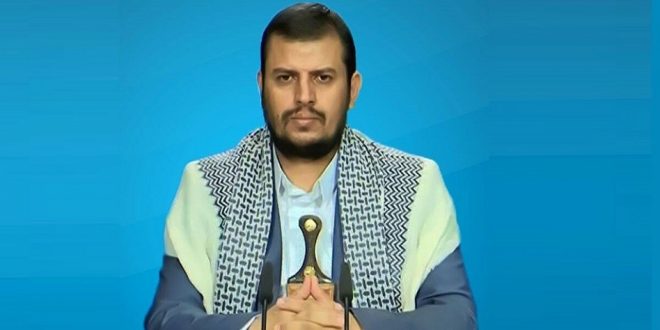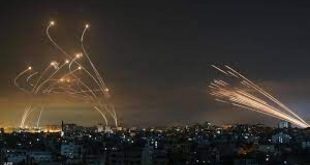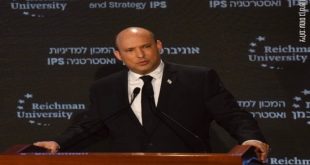Alwaght– The war in Yemen has now reached a highly sensitive and decisive juncture stemming from significant development in the political and military equations. Yemeni forces’ massive victories on the battleground and the success in developing modern and accurate weapons has made the aggression camp, not the Yemenis or the international community, to call for an end to the war. This is largely because the opposite side finds itself in a dangerous quagmire after four years of war.
On Tuesday, the Wall Street Journal disclosed that the White House intends to directly talk to Yemen’s Ansarullah movement in Oman. The US during the Stockholm peace negotiations tried to exhibit itself as a party against the continuation of the anti-Yemeni war and the Saudi and Emirati crimes against the Yemenis. But Trump administration’s ignorance of Riyadh and Abu Dhabi’s violation of the terms of the Stockholm de-confliction agreement and also vetoing the Congress bill to block arms sales to the Arab coalition question the US honesty of seeking to talk directly with the revolutionary movement for the sake of humanitarian situation. But what does the US seek by directly engaging in dialogue with Ansarullah?
Risks of continuing war for the allies
During the Stockholm peace talks in September 2018 the fundamental factor that caused the US to play a role was the home and international pressures to cut off military backing to Saudi-led coalition after its heinous crimes in Yemen and the killing of the prominent Saudi journalist Jamal Khashoggi who in October 2018 was killed by a Saudi hit squad at his country’s consulate in Istanbul. At the time, the military sales to Saudi Arabia and the UAE were huge on the one hand and Washington hoped that the military campaign will force Ansarullah to succumb to the pressures after Hudaydah encirclement on the other hand. These discouraged the Americans from serious attempting to implement the agreement.
Now they are facing new realities. As the humanitarian crisis worsens for Yemeni civilians, Trump loses the justification against the home voices asking for a ban on arms sales to the Arab coalition. The war has long caused a humanitarian crisis in Yemen. Two years ago, the UN released figures of Yemen war fatalities saying that some 10,000 civilians were killed by the alliance and its mercenaries. The Armed Conflict Location and Event Data (ACLED), a US-based institute researching the wars, suggests that during four and half years of the campaign, the Saudi-headed bloc killed over 91,000 Yemenis. The war also affected the lives of 22 million Yemenis. Yemen is now one of the world’s poorest counties with an urgent need for humanitarian aids.
In the present conditions, the Saudis and Emiratis cannot tell how the continuation of the war will help them move closer to the objectives for which they started their aggression. Do the Saudis still find collective punishment and impoverishment of the Yemeni civilians, 80 percent of whom living under the poverty line, as the path leading to the victory? The coalition thinks that seizing the Hudaydah port city will deal a game-changing blow to the revolutionaries as it deprives them of the tax money and finally leads them to surrender. The passage of time, however, showed that the Yemenis choose resistance over surrender. Not only the alliance is incapable of capturing Hudaydah but also the revolutionary forces now are targeting oil and military sites deep into the Saudi territories with ballistic missiles and drones on a daily basis, a response that frightened the UAE and made them withdraw leaving the Saudis alone struggling with even bigger challenges.
The American assessment appears to be that the war does not go as the Saudis expect but a peace deal with Ansarullah will save the Al Saud family’s rule over the Arabian Peninsula.
Recognizing Ansarullah’s role in peace and governance processes
The course of Yemeni revolution’s developments since 2011 made clear the fact to the regional countries, and the international opponents of the Axis of Resistance, that Ansarullah is not dismissible from the future developments and any plans for Yemen stability are not implementable without Ansarullah’s central participation. On the one hand, the form of Ansarullah participation in the power from the revolution of 2011 to the start of the Arab aggression in 2014 indicate that the stem of the crisis is the corruption of the government of Abdrabbuh Mansour Hadi, indifference to the revolutionary forces’ demands, and the Saudi intervention, rather than Ansarullah’s power monopolism. On the other hand, the Hudaydah agreement and before that the intra-Yemeni negotiations proved that Ansarullah is a player ready to talk and show commitment to the deals.
The American calculation is that the revolutionary movement can address Saudi concerns related to the future of its relations with Iran and the threats to the Arab kingdom’s interests in Bab-el-Mandeb Strait. This calculation highlights the special and unavoidable role of Saudi Arabia as Yemen’s neighbor and the need for Ansarullah, as part of future Yemen power structure, to cooperate with Riyadh. This issue has a historical background. In the 1960s, Saudi Arabia supported the Shiite government in northern Yemen in the face of the Egypt-backed southern rebels that sought to topple the central government. According to the vision favoring negotiations with Ansarullah, the talks on Yemen future should be intra-Yemen and a Yemeni-Ansarullah government should not be allowed to come to existence.
Washington fears regional developments
Amid the Congress bill to block the American military support to Yemen war and Trump’s vetoing of the move against the arms sales to the kingdom, the US Secretary of State Mike Pompeo sent a letter to the congressmen telling them that the main reason behind the US support to the Saudis was an effort to curb Iran and Ansarullah. Despite the fact that this claim does not reveal all of the truth about US support for aggression over the past five years, it shows that checking the Resistance camp’s power gain is certainly one of the main reasons for the American actions in the region. To Washington’s frustration, not only the Yemeni movement was not weakened but also it gained strength enabling it to pose as another wing of the Axis of Resistance countering the threats in the Red Sea and the Horn of Africa and dividing the ranks of the allies.
The overt war between Saudi and UAE-backed militias in Yemen confirms the news about the Emirati efforts over the past few months to go separate ways from Saudi Arabia. The Emirati leaders are afraid that further tensions with Iran can slip out of control and seriously damage the UAE economic model which intends to develop tourism to break with reliance on oil.
Thus, the new regional conditions have forced a US strategic shift towards direct talks with Ansarullah. Saudi Arabia is expected to be pressed for joining the initiative then.
 WILAYAH NEWS VOICE OF THE GLOBAL AWAKENING
WILAYAH NEWS VOICE OF THE GLOBAL AWAKENING






